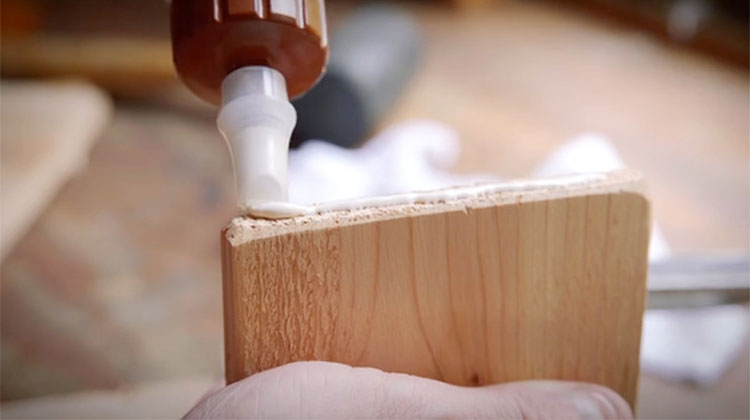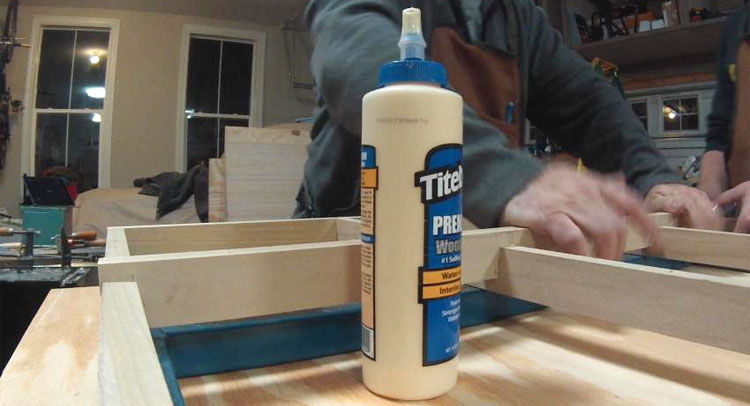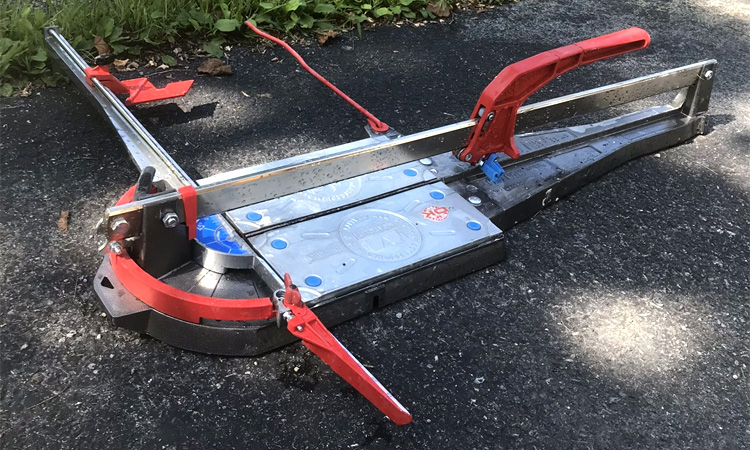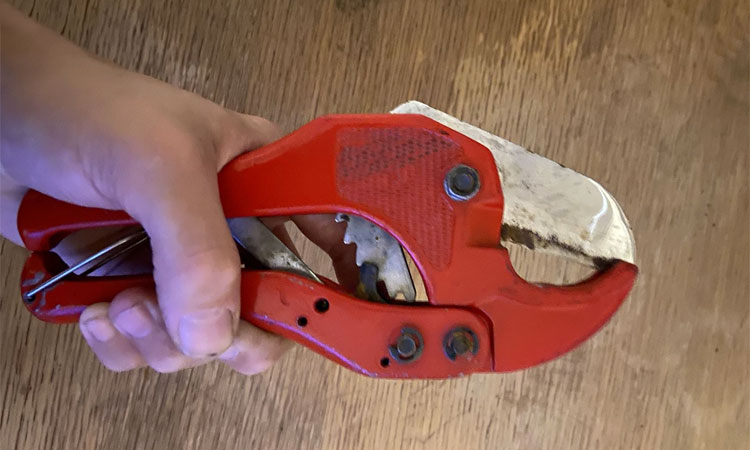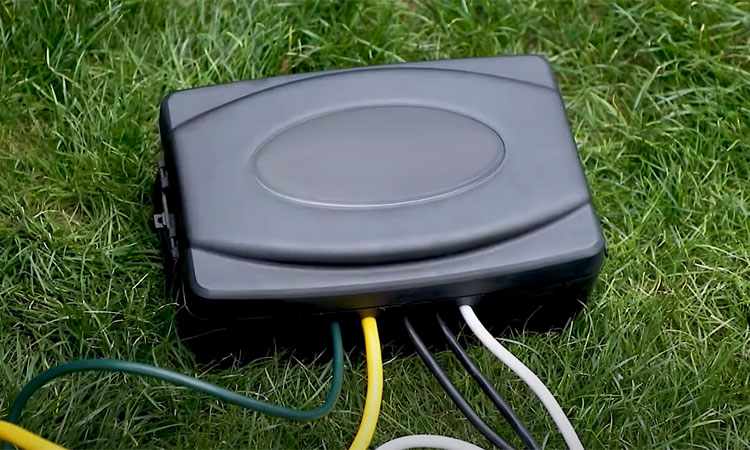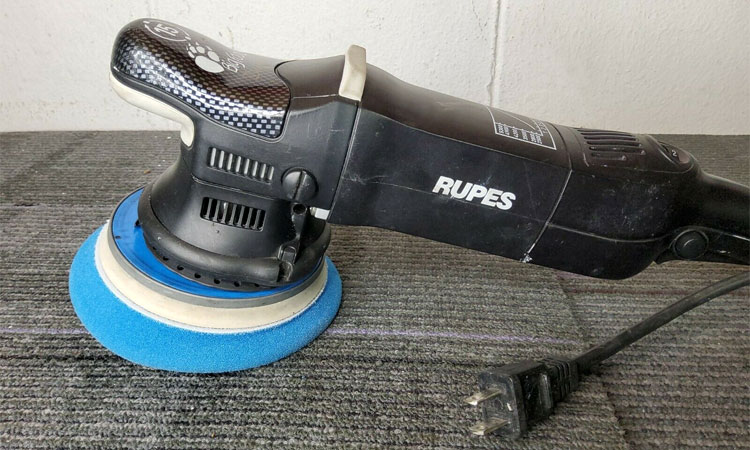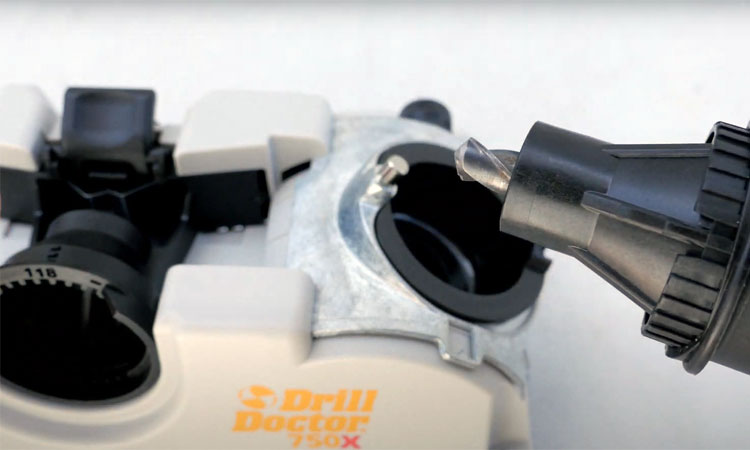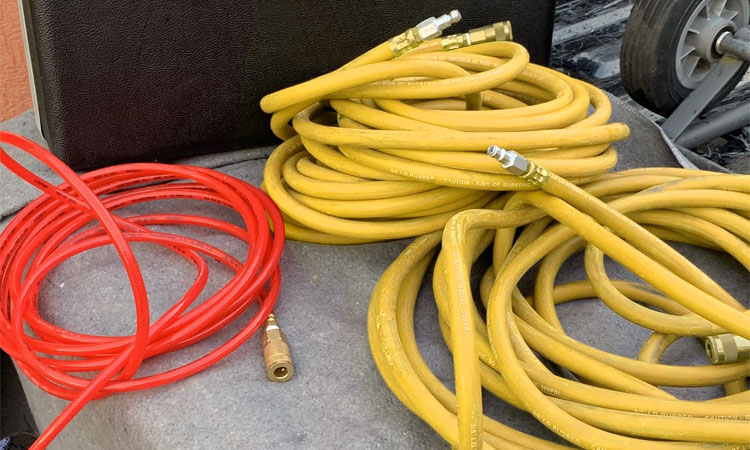What Is PVA Glue? (Uses, Types, and Best Brands)
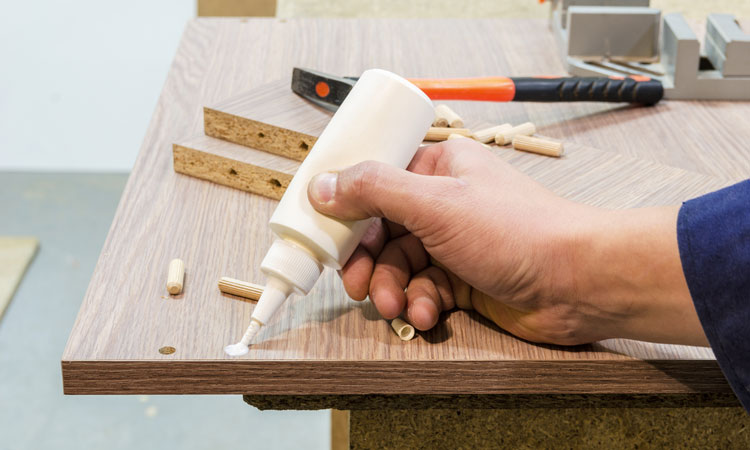
If you’re an avid woodworker and love to tinker with various projects in your spare time, then you likely have more than one type of glue stored away in a cabinet here or there. Numerous woodworking glues are currently available, all of which offer their own distinct advantages and disadvantages.
Few specific types of adhesives are as commonly used as PVA glue. PVA adhesive has been a staple of workshops for nearly a century and can be used for a near endless list of purposes. There are even many cheap PVA glues currently available that are capable of taking your current project to the next level.
If you’re currently searching for the best PVA glue to use on your project and wish to learn more about this popular form of adhesive, be sure to keep reading.
What is PVA Glue?
PVA glue is a synthetic polymer adhesive, which is extremely effective in the binding of porous materials, such as wood, cardboard, and paper. PVA glue is favored by many individuals because of its subdued cost and ease of use.
Glue of this type can be purchased in bulk containers and applies/cures in absence of any special surface prep work.
First discovered by Fritz Klatte in 1912, PVA wood glue is of a paste-like consistency, and can be spread across or dabbed onto any two surfaces that are to be bonded together. PVA glue is commonly used for woodworking, as well as arts and craft type projects.
Types of PVA Glue
PVA glue can be divided into a couple of different sub-categories. These subcategories are indicative of the manner in which this adhesive is to be used.
The following are the two most popular PVA glue types.
Woodworking Glue
PVA glue intended for use in a woodworking setting differs slightly from that intended for use in a number of alternative projects. PVA wood glue typically takes on a yellow or tan appearance and is virtually unsurpassed in its ability to permanently bond together assorted pieces of wood.
While it is likely that one could get away with using alternative types of PVA glue for such a purpose, some loss in strength should be expected.
Craft-grade PVA
If you can remember gluing together popsicle sticks, or making a collage as a child, then you have already experienced the virtues associated with PVA glue use. Craft-grade PVA glue (like Elmer’s School Glue) often comes in a small bottle with a twist-style cap and is white in color.
This type of adhesive is excellent at bonding together paper and cardboard.
Common Uses of PVA Glue
- Wood adhesive
- Fabric and leather adhesive
- Bookbinding adhesive
- Wallpaper adhesive
- Envelope adhesive
- Arts and crafts glue
- Drywall primer
- Filler (with sawdust added)
5 Best PVA Glues
#1 – Titebond III Ultimate Wood Glue
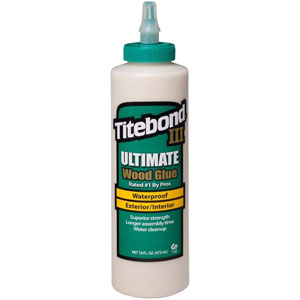
This PVA wood glue is one of the first adhesives of its type to be advertised as completely waterproof. A series of proprietary additives allow Titebond to weather any storm and remain just as rigid as it was the day after it was applied.
It’s an improvement over the water-resistant Titebond II and the original Titebond which is intended only for indoor use.
Titebond III tacks instantly, and completely sets in only 8 hours. This allows you to move on to the next step of your project much more quickly than would be possible when using alternative types of PVA adhesive.
This glue is also impervious to solvents and can be sanded without any difficulty. Whether working inside or outside, Titebond III should be up to any project that you have in mind.
A number of consumers have expressed concerns over the color of Titebond III, as they feel that it can be somewhat unsightly. The adhesive tends to dark in appearance once it sets, therefore one might consider applying this glue on interior joints, where discoloration is of no issue,
>> Check current price <<
#2 – Elmer’s Carpenter’s Wood Glue Max
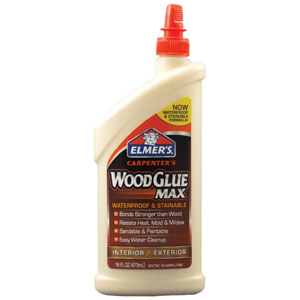
Elmer’s Wood Glue Max is rated as ANSI type 1, meaning that independent testing has deemed it to be waterproof and completely impervious to moisture.
Related: 4 Ways to Waterproof Plywood
This PVA wood glue also features wood particles in its formula, which allows the adhesive to be remarkably strong when fully cured. This can be of significant value in many load-bearing projects, where alternative PVA glues simply cannot stack up.
Elmer’s even states that, “wood will break before the bond does.” As a result, the use of Elmer’s Carpenter’s Wood Glue Max should equate into a project that stands the test of time, no matter the situation.
When using Elmer’s Carpenter’s Wood Glue Max, some users have begun removing the product’s nozzle, which is often cited as being a source of frustration. This nozzle often fills with adhesive, which blocks the outward flow of glue. However, removing the cap circumvents this issue in its entirety.
>> Check current price <<
#3 – Gorilla Clear Glue
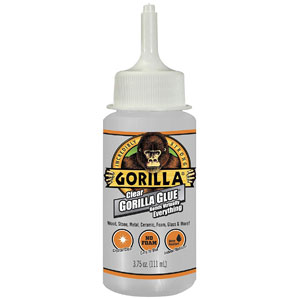
Clear Gorilla Glue is incredibly strong, yet dries completely clear, which should be of value when attempting to conceal its use.
This PVA glue is intended for use on virtually any surface, and instantly tacks in order to make quick work out of any project. Within two hours, Clear Gorilla Glue will set up, forming a nearly unbreakable bond.
This glue is also approved for both indoor and outdoor use, making it extremely versatile, and a must-have product for any DIY enthusiast.
Related: How to Get Gorilla Glue Off Skin
It is worth mentioning, that some woodworking enthusiasts have stated that Gorilla Clear Glue is extremely thin and prone to running. This might be something worth keeping in mind when working on angled surfaces, that are prone to runs and streaking.
>> Check current price <<
#4 – Lineco Neutral pH Adhesive
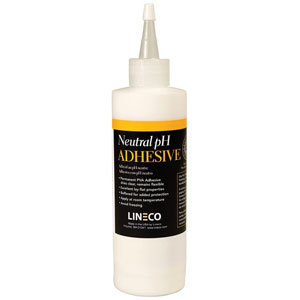
As its name suggests, this adhesive is non-acidic and features a neutral pH. This makes this product ideal for repairs on irreplaceable items, such as family heirlooms. On can rest assured that their repair will be completed without causing any further harm.
Lineco Neutral pH Adhesive also dries clear, meaning that any repairs that are made should be virtually invisible. This should be ideal when attempting to conceal the repair, which would otherwise degrade an item’s value.
When looking to construct a project in the most seamless of manners, Lineco Neutral pH Adhesive is worth considering.
It’s worth pointing out that this product does possess a relatively short shelf life. With time, Lineco Neutral pH Adhesive begins drying in the bottle, rendering it useless.
Therefore, it is important to only purchase large enough quantities of this adhesive, to complete whatever project that you are in the midst of.
>> Check current price <<
#5 – Mod Podge
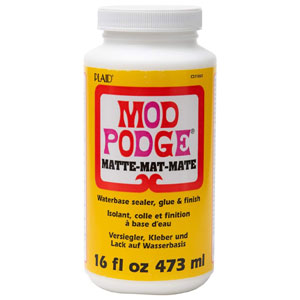
Mod Podge sets up in only 15-20 minutes, and can be sanded to provide a higher level of isolate. This product is also water-based, and completely non-toxic by design.
If you’re on the hunt for a quality sealer or PVA glue to have on hand, and often find yourself working on a variety of projects, then Mod Podge is worth a look. This adhesive is rated for use on wood, plastic, canvass, rubber, plastic, and cardboard.
Some users have stated that Mod Podge does not provide the superior bond that characterizes many of today’s most refined PVA products. Therefore, one might wish to avoid using this product on projects that are intended to be load-bearing.
>> Check current price <<
Is PVA Glue Toxic?
PVA glue is not toxic in any way, nor is it harmful to the environment. This is one particular reason that white PVA glue is so widely used during arts and crafts projects in many schools.
If PVA glue were to be ingested, it would be broken down and allowed to pass from the body without causing any harm. This probably explains why you’re still alive after eating all that glue and paste in your early school years.
Is PVA Glue Waterproof?
Most PVA glue is not truly waterproof, with the exception of Titebond III and a few others. However, other types of PVA glue are considered water-resistant.
Yellow woodworking-grade PVA glues are typically rated as a class-2 adhesive, which means they are resistant to water saturation and are capable of withstanding several soaking and drying cycles without substantial harm.
However, not all PVA glues interact with moisture in the same way. White craft-grade PVA glue is not nearly as resistant to water and should be kept away from moisture whenever possible.
In any event, PVA glue of any type should not be used when direct and repeated water exposure is likely to take place.
PVA Glue vs Elmer’s Glue
Elmer’s School Glue (the most popular type of Elmer’s) consists of a PVA base, with the addition of various additives. While Elmer’s reacts and cures much like any other PVA-type glue, it is inherently weaker than woodworking grade PVA.
Elmer’s is derived from the white form of PVA and is, therefore, less resolute than yellow PVA adhesives.
How to Remove PVA Glue
PVA glue can be removed with relative ease, should it be accidentally spilled atop a surface. Doing so only requires the use of white spirits, warm soapy water, a razor blade, and a couple of towels.
First, dampen a cloth or towel in white spirits, before wiping it across the surface that is to be treated. Continue dampening and soaking any PVA glue residue until it begins to soften.
Next, take a razor blade, and begin gently scraping away any softened PVA glue that remains. Continue working until solid matter remains.
You will now take a second cloth, that will be dipped in warm soapy water, and wipe it across the affected area, in order to remove any remaining residue.

